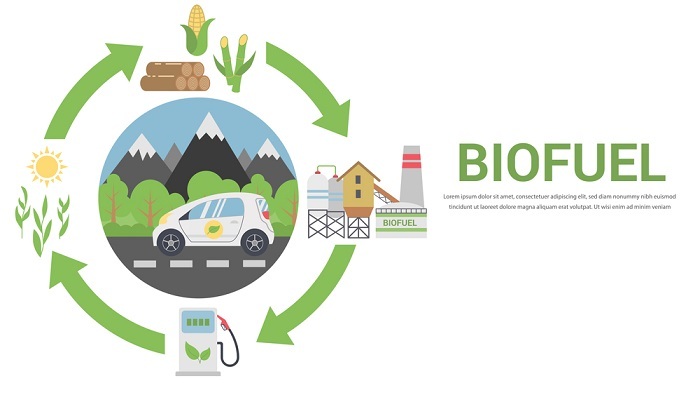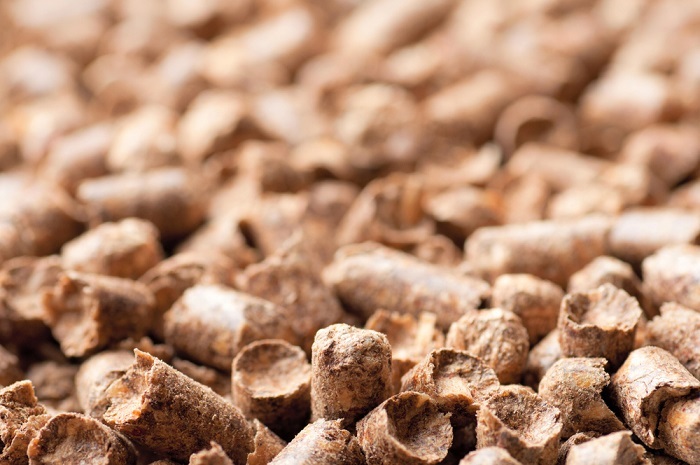
 Data Structure
Data Structure Networking
Networking RDBMS
RDBMS Operating System
Operating System Java
Java MS Excel
MS Excel iOS
iOS HTML
HTML CSS
CSS Android
Android Python
Python C Programming
C Programming C++
C++ C#
C# MongoDB
MongoDB MySQL
MySQL Javascript
Javascript PHP
PHP
- Selected Reading
- UPSC IAS Exams Notes
- Developer's Best Practices
- Questions and Answers
- Effective Resume Writing
- HR Interview Questions
- Computer Glossary
- Who is Who
Second-Generation Biofuels - An Overview
What are Biofuels?
Biofuels are the fuels that are produced from organic material like biomass either directly or indirectly. Biomass used here is mostly the plants material and animal waste. Use of biofuels has been in existence even before the use of petroleum oils. USA is known to be the leading manufacturer of the biofuels.
Generations of Biofuels
Biofuels are currently categorized into 4 different generations.
First Generation Biofuels
These are the most conventional type of biofuels. It has been in use before approximately 400 years. These fuels are usually made from the derivatives of food crops like sugar cane, corn etc. in the form of sugars, starch, vegetable oils or animal fats using the most conventional methods like fermentation by yeast and other biochemical methods like hydrolysis and conversion by transesterification chemical process. Here grains, potato, sugarcane are fermented and distilled to produce bioethanol and corn seeds pressed for producing vegetable oil is used as biodiesel. Here the major issue with these generation biofuels occurs with food versus crop affecting the human need.
Second Generation Biofuels
These are developed to overcome the limitations of the 1st generation biofuels by producing the biofuel from the non-food crops like wood, organic waste, food crop waste and some lignocellulosic biomass obtained from agriculture and forest residues.

Third Generation Biofuels
These biofuels are mainly developed from the algae and are called as oilgae. Examples include biodiesel produced from microalgae and bioethanol from seaweeds. Advantage of this generation fuels is that it does not require any cultivable land.
Fourth Generation Biofuels
The production of these recent generation biofuels uses the genetically modified algae which have the altered properties and cellular metabolism compared to algae. Advantages of these includes production of high yields, though high initial investment is required it is usually economical in the long run.
Second Generation Biofuels
These second generation biofuels are mainly developed due to the significant limitations of the 1st generation biofuels and these are usually made from the non-food crops which does not affect the human need for food.
Non-food materials which are used for the production of these generation fuels includes lignocellulosic biomass such as corn crops, husk and wheat straw.
Technology enables to isolate lignin and cellulose from the plants and this then fermented to produce alcohol.
These biofuels provides a greater sustainability percentage with better environmental benefits.

Production of 2nd Generation Biofuels
Production of these second generation biofuels is done through the following different methods.
Separate Hydrolysis and Fermentation (SHF)
This includes the sequential performance of enzymatic hydrolysis and fermentation processes with independent optimization of the temperatures. The enzymes needed for the hydrolysis are saccharifying enzymes like cellulases which are needed in small amounts. The efficiency of cellulase activity is inhibited by the high concentrations of sugar which is the end product produced. It is done in 4 steps -
Cellulase production.
Hydrolysis of cellulose.
Fermentation of hexose sugar.
Fermentation of pentose sugar.
Simultaneous Saccharification and Fermentation (SSF)
Here in this method both the enzymatic hydrolysis and the fermentation processes are combined in a single phase. This process of carrying out both saccharification and fermentation in a single vessel reduces the residence times and also cost effective. The basis for this SSF method is the use of enzymatic complex (cellulose) for hydrolyzing cellulose to obtain sugars. It is done in 3 steps as the cellulose hydrolysis and fermentation of hexose sugars is carried out in one step.
Simultaneous Saccharification and Co-fermentation (SSCF)
This method is a feasible option for producing ethanol from the lignocellulosic biomass which is rich in xylose. Here also the enzymatic hydrolysis of pre-treated material is carried out along with the fermentation process in a single vessel. To encourage the fermentation process it also uses advanced genetic engineering technologies. It is done in 2 steps.
1st step where the cellulose production is done.
In 2nd step hydrolysis and fermentation of both hexose and pentose sugars is carried out at a time.
Consolidated Bioprocessing (CBP)
In this method, within a single reactor the combination of 4 different processes is carried out simultaneously. These includes ?
Production of saccharolytic enzymes using micro-organisms like A. nidulans, Pencillium sps, A. niger and Trichoderma reesei
Hydrolysis of polysaccharides - Lignocelluloses are chemicaly digested by the enzymes to forma a fermentable sugars like glucose and xyloses.
Fermentation of hexose sugar - Converted into ethanol by yeast like S. cerevisiae, Pichia stipites, Zymomonas mobilis etc.
Fermentation of pentose sugar
The obtained ethanol is then isolated through distillation process and this distilled bioethanol is then transferred to a rectification column to enable the concentration and purification of the biofuels. However extremely purified ethanol is only produced by dehydration.
Benefits of CBP
This method results in the processing of lignocellulosic biomass for the production of biofuels and other valuable products at low costs as much as 41%.
Increases the productivity of ethanol from cellulose.
It can be carried out at single optimized temperature.
Overall operational method is simplified in one step by carrying out in a single reactor for the production of ethanol from the cellulosic biomass.
This process requires less energy and minimal pre-treatment.
This ensures the complete removal of enzymes.
Inhibits the production of other bye-products.
Thus consolidated bioprocessing CBP technology is chosen for the production of second generation of biofuels.
Drawbacks
As this CBP process involves the complete saccharification of the lignocellulosic biomass, it utilizes high loadings of enzyme for digestion.
It takes long time for fermentation process and yield is also low.
Here the optimal rate of hydrolysis of cellulose is higher than that of ethanol.
In order to overcome the limitations of physical and chemical challenges with CBP, pretreatment of biomass is done. During this pre-treatment stage cellulose crystallinity is reduced and the degradation of lignin occurs in order to produce high yields of sugars.
Using modified Saccharomyces cerevisiae as the CBP organism can yield more ethanol.
Using fungal-mediated CBP can produce high yields.
Limitations of Second Generation Biofuels
Limited growing feed stock when compared to other advanced generations.
Most of the agricultural waste is used to feed cattle.
Some of the waste is used for cooking purpose.
It gives low yields when compared to the 3rd and 4th generation biofuels.
Conclusion
Second generation biofuels which is the subsequent generation of biofuels produced from the lignocellulosic biomass mainly from the agricultural and forestry wastes. Process involved in the production of these biofuels includes different stages like pre-treatment, production of enzymes, hydrolysis of lignocelluloses, fermentation of sugars and dehydration and distillation of biofuels like bioethanol. Second generation bioethanol is a useful alternative to fossil fuels with some advantages.

